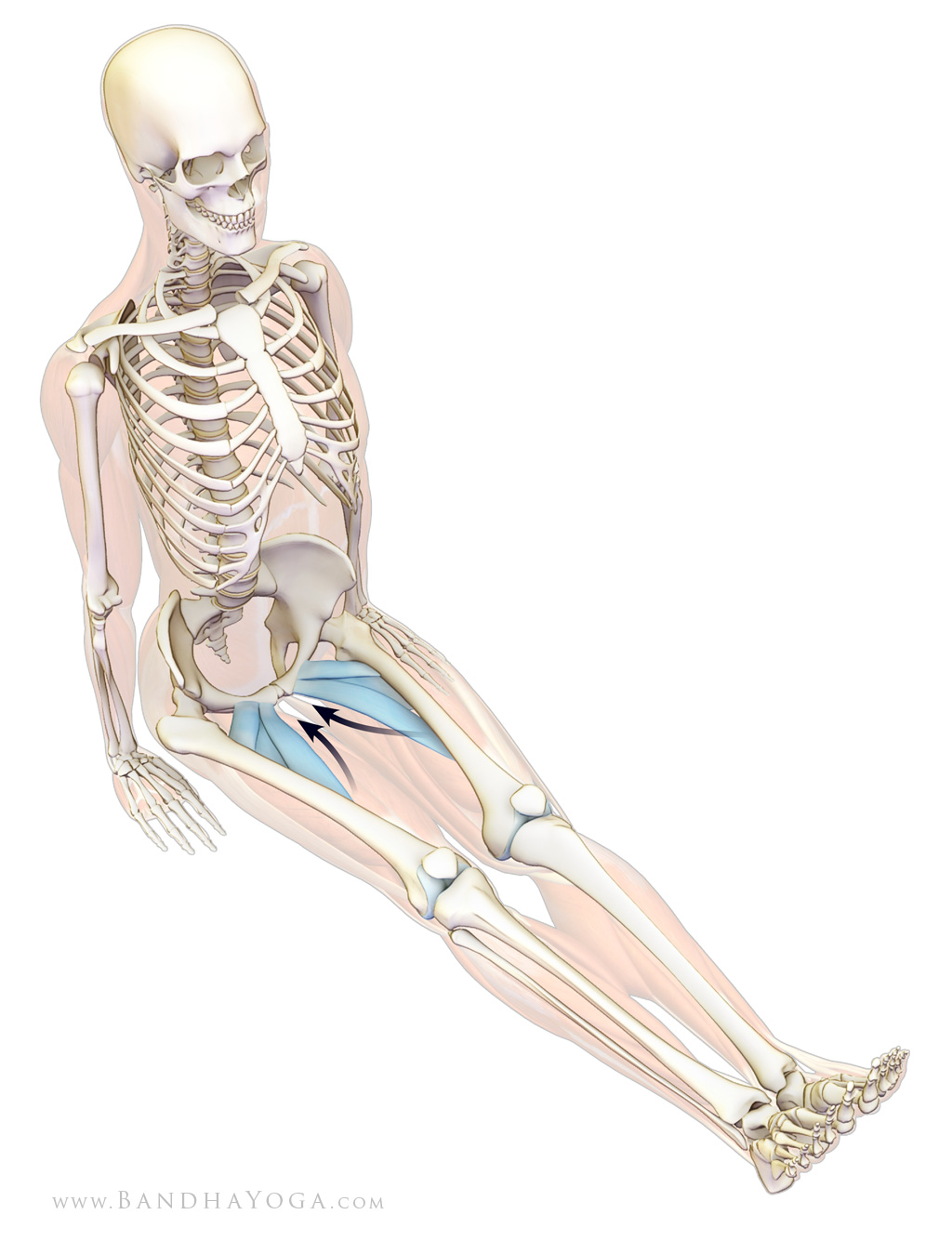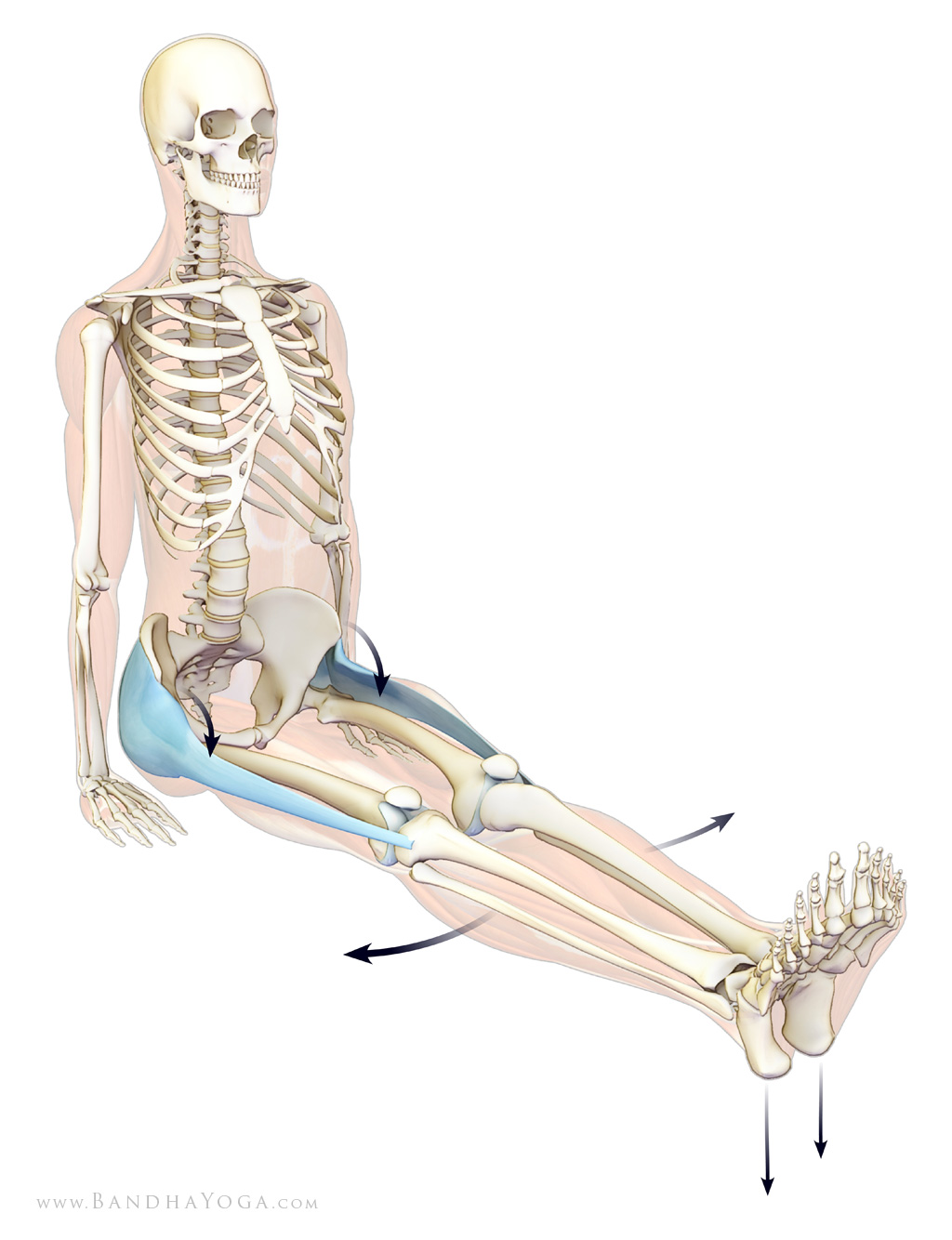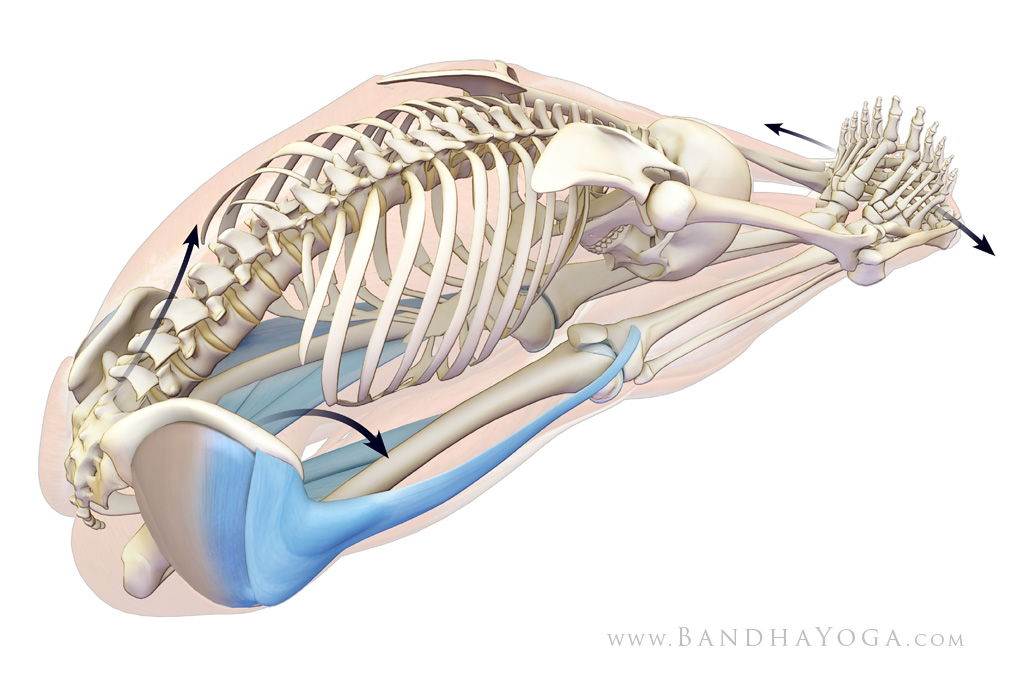In our last post we focused on the benefits of engaging the quadriceps in forward bends. These include reciprocal inhibition of the hamstrings and the contribution of one head of the quadriceps, the rectus femoris, to flexing the hip joint and tilting the pelvis forward. Tilting the pelvis forward helps to prevent hyper flexing of the lumbar spine through lumbar-pelvic rhythm.
This post emphasizes the role of hip adductors and abductors in flexing the hips with a cue for co-activating these muscles. Balanced engagement of these muscles produces a stabilizing bandha about the hip joint and pelvis, while at the same time synergizing hip flexion. This contributes to femoral-pelvic rhythm, which in turn aids to prevent hyper flexing the lumbar in forward bends.
First, let’s look at the anatomy. The more anterior adductor muscles (the adductors longus and brevis) draw the femurs toward the midline, adducting them. The pectineus contributes to this action. The tensor fascia lata (TFL), on the other hand, draws the femurs away from the midline, abducting them. Thus, the TFL and adductors (and pectineus) are antagonists for these actions. These same muscles all flex the hip joint and are synergists of this action. Accordingly, co-activating this antagonist/synergist pair can be used to stabilize the hip (through opposing actions) and synergize hip flexion.
 |
| The adductors longus and brevis and pectineus in Dandasana. |
Dandasana (staff pose) is a good pose for learning this how to work with these muscles together. I begin by drawing the upper inner thighs towards one another. This activates the more anterior adductor muscles — the longus, brevis and pectineus Then, I press the calves into the mat, fixing them there, I attempt to drag the legs apart. The legs are fixed on the mat and so will not actually abduct, but this cue engages the TFL (which you can feel contract on the sides of the pelvis). Adding slight internal rotation of the thighs refines this action. The adductors and the TFL work together to synergize hip flexion, which then acts to lift the lumbar region (through lumbar-pelvic rhythm). Try each of these cues independently. Then combine both actions by gently squeezing the upper inner thighs together while attempting to draw the lower legs and heels apart. Note how the opposing actions of these muscles create a stabilizing bandha across the hip joint, while their common actions synergize hip flexion and pelvic tilt.
 |
| The tensor fascia lata in Dandasana. |
This cue is portable to other poses like Paschimottanasana (and Uttanasana link to accessing nutation) as shown. If you can reach your feet in Paschimottanasana, then the cue for engaging the TFL becomes pressing the outer sides of the feet into the hands. If you are working in a modified version of this forward bend (as with a belt around the feet) then the cue is the same as in Dandasana. In Uttanasana, fix the feet onto the mat and attempt to drag them apart (to engage the TFL) while drawing the upper inner thighs together (to engage the adductors longus and brevis and pectineus).
 |
| Co-activating the adductors, pectineus and tensor fascia lata in Paschimottanasana. |
Combining contrasting elements produces balance and stability. Combining synergistic elements produces movement. Movement creates rhythm. Lumbar-pelvic rhythm helps to prevent hyperflexing the lumbar spine—which can aid to prevent lower back strains in yoga.
If you suffer from back pain, be sure to consult your physician to determine the cause; work under the guidance of a physician to manage your pain (see our full disclaimer here).
Thanks for stopping by! Check in next week for Part Three of this series on preventative strategies for lower back strains in yoga. Also, be sure to visit us on Facebook for your free Chakra poster and e-book.
Namaste’
Ray and Chris